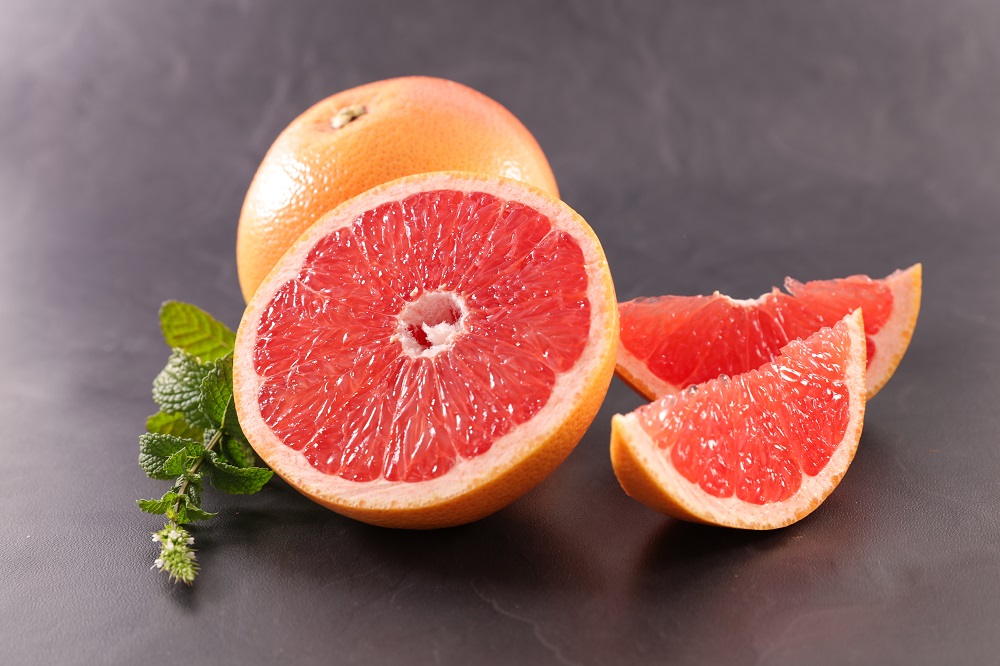Grapefruit, a cross-breed between oranges and pomelo fruits, originated in the island country of Barbados. Grapefruit most often presents an orange-colored outer peel with light pink to red inner flesh.
Owing to the nature of fresh produce, grapefruit does not last indefinitely, and it is important to be aware of its shelf-life.
Grapefruit, like all organic foods, is susceptible to the spoiling effects of bacteria and the environment. If properly stored, grapefruit can last as long as twelve months, so long as the appropriate method is followed1.
What is the Ideal Temperature to Store Grapefruits?
In order to determine exactly how long your grapefruit will last, it is important to keep the average temperature of your storage method in mind. If the temperature is too low, ice crystals may form from the water in your fruit, discoloring it and damaging its texture.

If the temperature is too high, however, this will both catalyze the grapefruit’s own enzymes as well as encourage the presence and growth of microorganisms. A balance must be struck between high and low temperatures.
According to a bulletin posted by the U.S.-based University of Maine¸ the ideal temperature for grapefruits is approximately 40°F, which is around the average temperature of most consumer refrigerators2.
What is the Ideal Humidity to Store Grapefruits?
Much like temperature, it is vitally important to determine the relative humidity of the storage vessel or storage space you are keeping your grapefruit in. While doing this is somewhat more difficult than measuring temperature, it is just as important.
Humidity is yet another component that motivates enzymes within the fruit to begin breaking it down at a chemical level, hastening its spoilage. Apart from this, most bacteria and fungi require a source of water to begin multiplying, meaning that high-humidity environments can encourage the development of microorganisms in food.
According to a similar bulletin posted by the University of Maine, the ideal humidity for grapefruits is a relative ninety five percent. If the humidity is far lower than this, the fruit may dry out and lose its quality. If higher, enzymatic action may take place.
How To Maintain Temperature and Humidity in a Storage Area
While appliances like fridges and freezers are capable of regulating their internal temperatures and humidity, they are sometimes too small to store large amounts of grapefruit.
Especially when dealing with industrial amounts of fresh produce, it is advisable to invest in a humidifier or dehumidifier, depending on the relative humidity of the storage location.
Another factor to consider when controlling temperature and humidity is air flow. Closing windows and sealing cracks within the walls of the storage facility will help maintain a stable environment for the fruits.
For a low-cost method of maintaining a high-humidity environment, wetting the floor of your storage facility will introduce moisture into the air over time by the physical process of evaporation.
How Long Do Grapefruits Last Out on the Counter
As mentioned previously in this article, the main factors that can contribute to the spoilage of your grapefruits are temperature and humidity. Because of this, leaving your grapefruit out in the open on your counter is the shortest form of storage possible.
Keep your grapefruits in a dark and cool area, free of any water. Direct sunlight can also rapidly dry your fruit, so it is best to keep the grapefruits away from uncovered windows.
If stored in ideal conditions, the grapefruits will last up to one week. It is possible for the grapefruit to remain edible for longer, though the quality will suffer greatly.
How Long Do Grapefruits Last in the Fridge?
A far more advisable option than simply leaving out on your counter, choosing to refrigerate your grapefruit is relatively simple, and will keep the fruit shelf-stable for far longer.
In order to store your grapefruit using a fridge, first wash the fruit so as to remove any dirt or debris. Pat dry with a towel and store in a resealable plastic bag.
Push out any excess air from within the bag before placing it in the fridge.
Ensure that the fridge temperature is set to 40°F or lower, as any higher will affect how long the grapefruit will remain edible.
If each step was followed, and the conditions are found to be ideal, your grapefruits will have an extended shelf-life of up to four weeks.
Avoid removing from the fridge unless you wish to consume them, as repeatedly warming and cooling the fruit will encourage cellular breakdown from the fruit’s enzymes.
How Long Does Grapefruit Last in the Freezer?
The ideal solution for very long-term storage of grapefruits, electing to freeze your fruit comes with its own set of drawbacks.
Storing grapefruits in the freezer will keep it for a relatively long length of time, but the harsh environment involved in the process of freezing will impact the fruit negatively. The inner flesh of the fruit will grow paler, as well as develop a mushier texture.
If the need for long term preservation is more important than the quality of the fruit, you will need a knife, a lined baking tray, and resealable plastic bags.
First, wash the fruit before patting dry with a cloth towel and cutting into wedges.
Place the wedges along the baking tray, spacing them evenly so they do not freeze together. Place the baking tray in the freezer for two hours. Make sure not to leave the baking tray for much longer than two hours, as the individual slices may develop freezer burn.
Remove the grapefruit wedges from the freezer and pile into your resealable plastic bag. Once sealed tightly within, return to the freezer.
Signs of Spoilage in Grapefruits
Signs of spoilage in grapefruits are often quite obvious, especially if the fruit is not frozen.
Any deep indentations or discolorations in the skin are a sign of the fruit beginning to break down. White spots around the stem or along the skin are fungal colonies, and should warrant an immediate disposal of the grapefruit.
Texturally, if the grapefruit flesh has grown pliant and soft, it is wise to proceed with caution, as this may be a sign of the fruit going bad.
References:
1. Unknown Author. (January 2019) “Grapefruit, raw, pink and red, all areas” U.S. Department of Agriculture
2. Unknown Author. (June 2017) “Grapefruit” Cargohandbook.com https://www.cargohandbook.com/Grapefruit





Hi, I'm Dom
Dom Eats was started to help other people fall in love with food. While cooking can feel intimidating, it doesn't have to be.